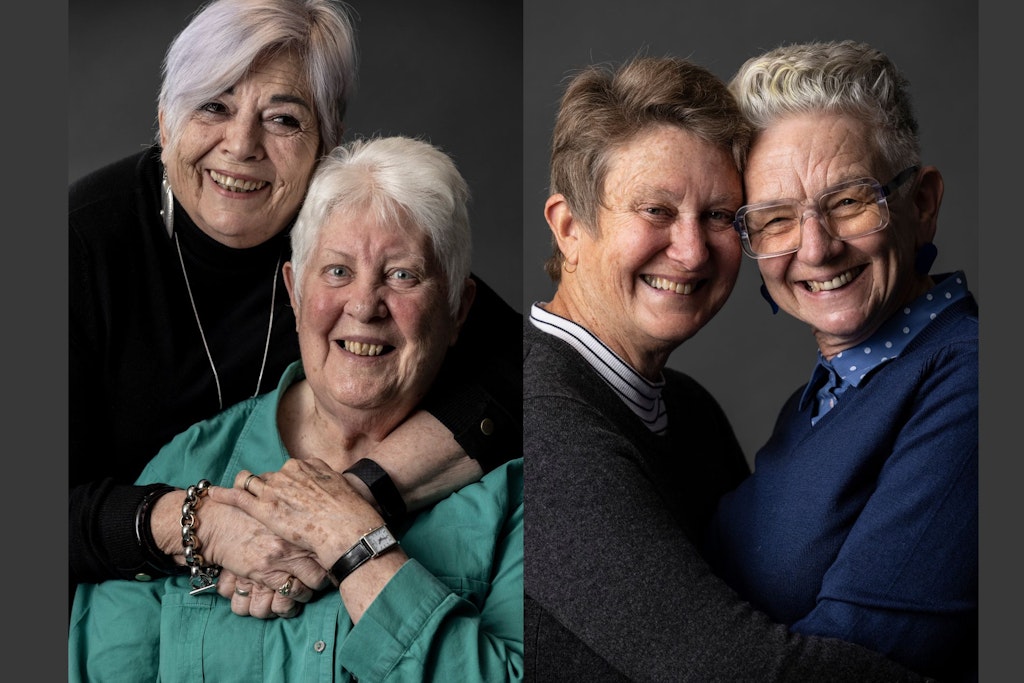Safe spaces a necessity for LGBTI elders to avoid opting out of aged care
Last updated on 23 October 2023

Although LGBTI inclusion in aged care is the strongest it’s ever been, it does not mean aged care settings are seen as safe spaces for older LGBTI people. Many LGBTI elders have lived through varying periods of social and cultural transition and are still wary of revealing their sexual identity or entering aged care due to fear of discrimination.
Having grown up during a time when LGBTI people were arrested and jailed for their sexuality, older LGBTI people hold lingering concerns about entering institutionalised care settings. Personal experiences with electroshock or conversion therapy mean many also hold deep-rooted fears of medical and religious institutions – two sectors to which aged care has strong connections.
With high levels of tension and fear, older LGBTI Australians often avoid aged care services until the last minute. They may even go back into the closet and hide their true selves from fellow residents and staff members for fear of discrimination, Robert Hardy, Director – Training and Capacity Building at LGBTIQ+ Health Australia, explained to hello leaders.
“One of the main issues that creates a barrier to even accessing aged care services is the fear of discrimination and specific needs not being met. That means older LGBTI people are cautious to even look into care options based on a history of poor experiences accessing support services,” Mr Hardy said.
“There’s a low level of trust in general and in Australia, the aged care sector is dominated by religious-based providers so there can be another level of fear that they won’t be accepted for who they are. That can be quite damaging to mental health and well-being.”
The 2021 census reported that only 5.6% of older Australians identified as gender diverse which is likely to be an underrepresentation due to their unwillingness to report their sexual orientation.
Historically, the rates at which older LGBTI Australians have experienced abuse and/ or have suffered from mental health issues is disparagingly high compared to the heterosexual community in the aged care sector. That’s why it’s essential for aged care providers to step up and visibly support, accommodate and encourage existing and future LGBTI residents.
Understand histories
Older LGBTI people will have their own personal experiences and unique histories based on family and community acceptance, and it’s essential that any provider understands that. Too often a blanket statement of treating every resident equally can prove detrimental.
“It’s really important that when we’re caring for a person, that care is individualised for their needs. By understanding people’s history we can then understand what their needs would be, particularly if an LGBTI person develops dementia. A history of trauma can be lived in the present,” Mr Hardy said.
“A deeper understanding of their history means you can put things in place to support the person particularly if there are changes in their behaviour which may be challenging for staff or family to deal with.
For example, if someone had a history of conversion therapy, religious symbols in their room or around them could make them relive a very traumatic time in their life.”
Creating a supportive and welcoming environment for older LGBTI people will therefore help them feel safe about coming out in a new environment, rather than going back into the closet. But they will be looking for signs and signals indicating it’s safe to come out, and that’s something a provider has to facilitate.
Recognised LGBTI networks
The sudden move to an aged care setting could be daunting for LGBTI residents who fear backlash or conflict with residents holding contrasting views on sexual orientation and gender identity. It’s therefore up to you and your staff to create and safely monitor an LGBTI-friendly environment.

From personal experience, Mr Hardy has spoken to providers who have said they work to the assumption there are no LGBTI older people receiving care or services. He said the exact opposite has to happen.
“We want providers to assume there are LGBTI people using their services because we know they are, but it’s most likely they just don’t feel safe to come out. But we’ve had aged care organisations do the training and then hold a morning tea for pride month and by the end of it LGBTI people have come out or disclosed themselves as a result. Little things can go a long way,” Mr Hardy said.
Establishing an internal LGBTI support group is one way to support residents looking for a safe space. A social group means they can instantly connect with fellow LGBTI residents, allies or staff members. Additionally, look to external organisations and LGBTI networks providing visitor services and social events outside of an aged care setting. Examples include Out and About/Switchboard (Victoria), ACON (New South Wales) and the Queensland Council for LGBTI Health.
Modern policies
All organisations should have existing policies promoting equality, diversity and inclusion amongst residents and staff. However, in an evolving world, it’s important to reevaluate policies to ensure they meet the current needs of the LGBTI community. Policies have to dig deeper into the needs of older LGBTI people rather than providing a surface-level explanation of acceptance.
One positive step aged care providers can take is incorporating relevant training and education programs into their onboarding and personal development processes.
“From the leaders in the organisation to those at the coal face delivering services, training can just start off small. It could start off with some E-learning; even one hour can go a long way to opening up people’s awareness,” Mr Hardy explained.
Other steps providers can take include:
- Replacing outdated terminology with accepted wording. For example, although LGBTIQ+ Health Australia feature ‘queer’ as part of their title, they recognise the term has negative connotations for older people as it was a derogatory term, and so LGBTI is their preferred reference for older people.
- Reinforcing organisational policies and practices to better support same-sex couples entering aged care, or LGBTI residents with chosen families, i.e. an older person who may have transitioned or come out later in life and no longer has contact with their biological family.
- Creating confidential and inclusive forms asking the right questions to source relevant information in regard to gender and sexuality.
- Promoting inclusive language among staff communications, including emails, as well as promotional or official materials and documents.
Where to start
Whether you’re just starting a journey to better inclusion, or you want to strengthen your current policies and initiatives, LGBTIQ+ Health Australia has relevant resources and references on their website, including the Silver Rainbow project.
There are training partners located in each State and Territory to provide direct assistance. Meanwhile, the Department of Health’s Diversity Action Plan for Aged Care, ACON and Rainbow Health Australia’s Rainbow Tick program are other leading resources for aged care providers ready to strengthen their LGBTI services.